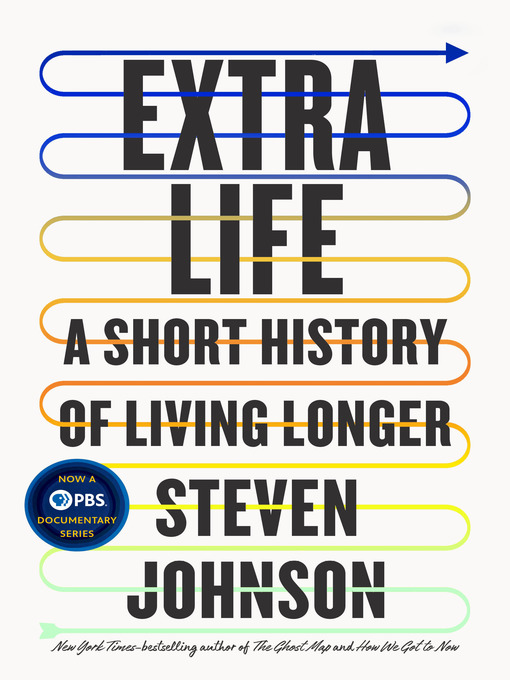
Extra Life
A Short History of Living Longer
کتاب های مرتبط
- اطلاعات
- نقد و بررسی
- دیدگاه کاربران
نقد و بررسی

Starred review from April 1, 2021
Since the early 20th century, the statistical human lifespan has doubled--an increase of 20,000 days. This is the largest, most widespread, and most rapid lifespan increase in human history. With this latest work, best-selling author Johnson (Where Good Ideas Come From) attempts to explain the significant factors causing increased life spans and to broaden readers' understanding of those factors. Johnson looks at seven wide-ranging categories: vaccines and variolation; the use of data; pasteurization and chlorination; testing; antibiotics; safety; and improvements in food availability. In each case, he points out the range of people, events, and seemingly unrelated disciplines that had to collaborate in order for lifespan-increasing innovations to become practical and widely adopted, like Sir Alexander Fleming's discovery of penicillin. Blending scientific examples with medical discoveries, the narrative remains engaging and accessible from chapter to chapter, especially where Johnson effectively describes how illnesses that were once considered terminal have become manageable conditions. The thoroughly documented book includes numerous charts and an extensive index. VERDICT Johnson, as in his previous works, digs into his subject to highlight new connections and interrelated facts that produce fascinating and sometimes unexpected insights. A smoothly written book of medical wonder that pays specific attention to racial disparities in health care.--Richard Maxwell, Porter Adventist Hosp. Lib., Denver
Copyright 2021 Library Journal, LLC Used with permission.

March 15, 2021
A surprising look at why humans are living longer. Author of a dozen lively, informative books on science and technology, brain and body, Johnson begins his latest with an intriguing fact: In just one century, the human species has doubled its life expectancy. Wondering why, he set out to investigate the forces that led to such a dramatic improvement. As in his previous books Where Good Ideas Come From and How We Got to Now, Johnson argues convincingly that critical changes occur not from the endeavors of lone geniuses but from a network of researchers, activists, reformers, publicists, producers, and marketers. The discovery of penicillin, for example, has generated a mythical tale about Alexander Fleming, who noticed, in an overlooked petri dish, that a layer of mold happened to have killed bacteria. The reality, Johnson reveals, was far more complex: "For penicillin to graduate from a brilliant accident to a true miracle drug, three things needed to happen: someone had to determine whether it actually worked as a medicine; someone had to figure out how to produce it at scale. And then a market had to develop to support that large-scale production." In tracing particular life-threatening diseases, such as cholera, tuberculosis, and smallpox, Johnson examines breakthroughs that have had overarching significance in extending life expectancy: vaccines; advances in data collection; the invention of epidemiology, pasteurization, and chlorination; the advent of regulations and testing of drugs; antibiotics; improved safety technology and regulations; and the development of modern soil science. The author points to randomized, controlled double-blind trials, involving a network of investigators and participants, as crucial in proving the efficacy of any new drug; and to international, multidisciplinary collaboration involved in disseminating treatments. Global eradication of smallpox, he asserts, "was as dependent on the invention of an institution like [the World Health Organization] as it was on the invention of the vaccine itself." Entertaining, wide-ranging, and--in light of Covid-19--particularly timely.
COPYRIGHT(2021) Kirkus Reviews, ALL RIGHTS RESERVED.

April 1, 2021
A baby born in England in 1920 had a life expectancy of 41 years. Two catastrophes, WWI and the 1918 influenza pandemic, had ravaged the British population. Today, British newborns can expect to live into their eighties. This history of major medical and social innovations over the past century that have allowed more babies to reach adulthood, thereby raising life expectancy rates, comes from prolific and popular science writer Johnson (How We Got to Now, 2018; Enemy of All Mankind, 2020) He considers major breakthroughs (vaccines, chlorination, fertilizer, etc.), who created them and how, and how they came to be accepted by doctors and the general public. He also shows how life expectancy gaps between various economies and demographics are narrowing worldwide. Johnson writes that we tend to take these positive advances that keep us alive for granted (at least until something like COVID-19 comes along). His final takeaway is a warning against becoming so complacent about our increasing life expectancies that we allow another threat to eradicate our progress: climate change. Expect considerable interest.
COPYRIGHT(2021) Booklist, ALL RIGHTS RESERVED.

























دیدگاه کاربران